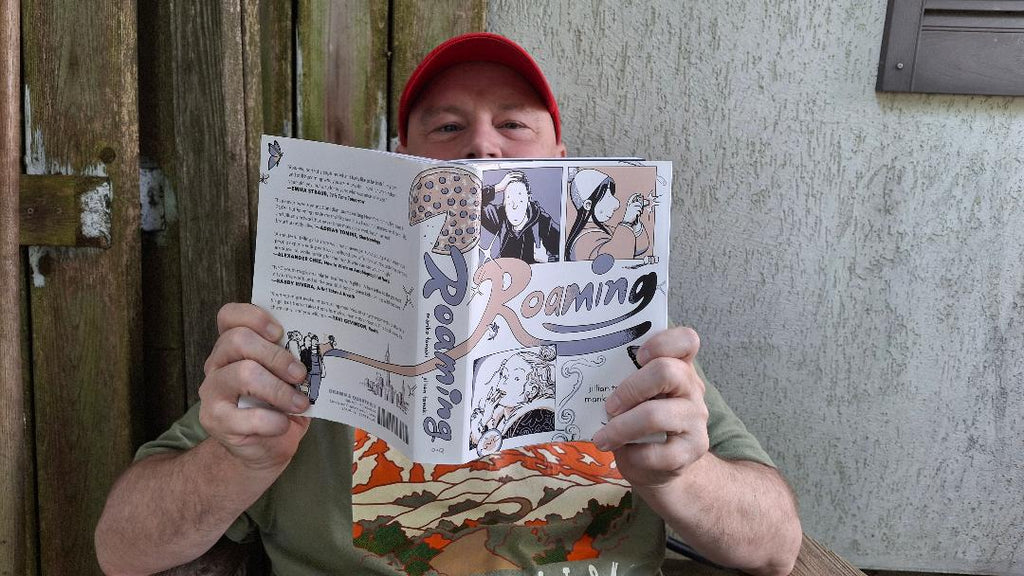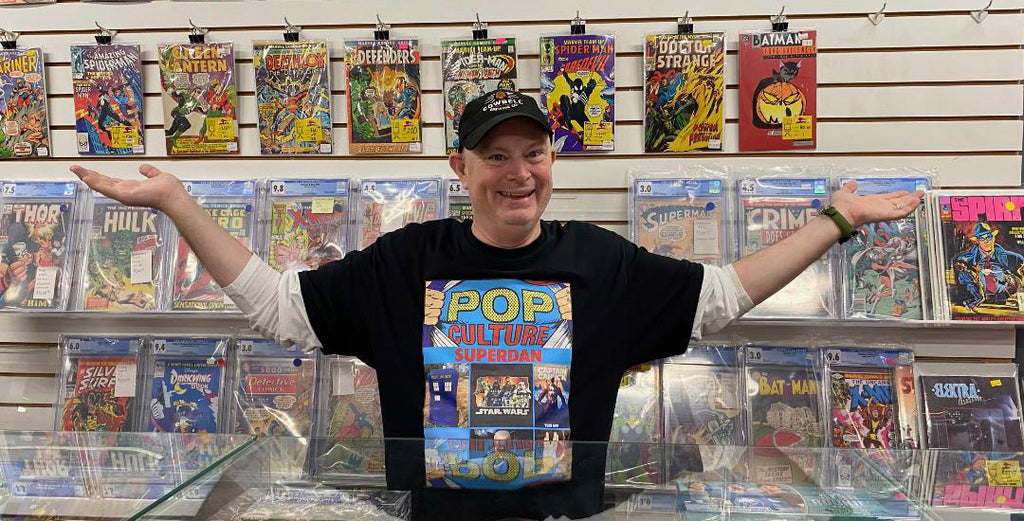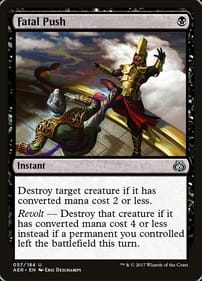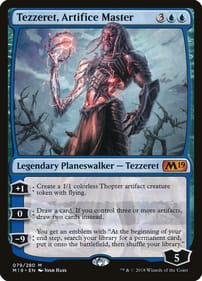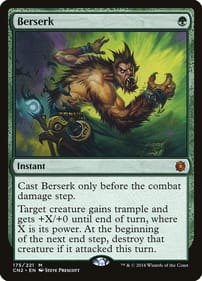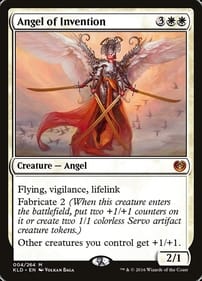I’m the Odd Man Out as GNG Takes on Roaming
By Dan Brown SPOILER WARNING: This column contains details from the graphic novel Roaming, so if you value surprise stop reading right now! Here’s the rundown on the most recent meeting of the L.A. Mood Graphic-Novel Group, which was held Saturday, July 12. The book: Jillian and Mariko Tamaki’s Roaming, which follows three Canadian first-year university students on a five-day trip to New York City. The discussion: In short, I was in the minority as the only GNG member who really enjoyed the book. Odd man out, as usual! GNG has a custom of choosing a Canadian comic for our July meeting, so we honoured that tradition with this selection. (By sheer coincidence, it comes on the heels of two other books by Canadian creators in May and June.) I, along with one other member of the group, pitched Roaming back in January. While I love everything by the Tamakis, other members of the group strongly disliked Roaming, including someone who couldn’t even finish the thing. The thick volume centres on Dani, Fiona, and Zoe, three university students who take a trip to New York for a brief holiday from their studies. It’s very much a story about the problems of young people, which I think is where most of the antipathy comes from. No one at the table said it wasn’t a realistic portrayal of characters in their late teens/early twenties – in fact, the problem seemed to be it was too accurate. Carol Vandenberg, co-owner of L.A. Mood, said Roaming didn’t work for her because it isn’t leavened with humour. The trio of characters see Big Apple sights, go to bars, get coffee, eat pizza, and of course there’s a drama because Fiona is an interloper who threatens Dani and Zoe’s friendship. Spats ensue. Carol made the point that if you’re going to tell a story about young people, a better approach would have been the one John Hughes adopted with the movie Ferris Bueller’s Day Off: Play the foibles of youth for laughs. Gord Mood, L.A. Mood’s other owner, echoed that sentiment, adding the example of another funny coming-of-age comedy, Dazed and Confused. Several elements prevented GNG members from enjoying the travel tale including the ending, which doesn’t wrap anything up. Other members said the art was prosaic, and that a flashback scene – in which we observe Dani and Zoe at a high-school party – wasn’t introduced in a way the reader could understand. Why do I feel differently? Part of my reason for pitching the book was how the character of Fiona is a huge drama queen. Very early in the book, there are signals to readers to treat anything she says with skepticism. The question in my own mind was, “Can we appreciate this book even if one of the leads is an awful person?” After all, if an artist and writer can create a comic with a character who turns you off, isn’t the fact you reacted to a fictional character like you would to a real person a sign the creative team has done a good job? (Would be interested in any opinions on this question in the comment box below.) I also believe there’s something darkly funny about a group of friends whose relationship revolves around avoiding roaming charges on their cellphones. As it turned out, Fiona was just one of the reasons GNG members didn’t enjoy the book, although someone suggested a comic depicting the same characters once they are out of school and taking on careers might make for a better read. Further reading: If you aren’t daunted by now, two other graphic novels by the Tamakis come to mind – Skim (it follows high-school friends) and This One Summer (which features a tween lead). L.A. Mood’s Graphic-Novel Group meets the second Saturday of each month. Next month’s selection is I Am Stan, Tom Scioli’s graphic biography of the one-time Marvel Comics editor-in-chief. You might have heard of Lee before! We will reconvene August 9 at the gaming tables in the store at 11 a.m. You are invited to come join the discussion! Dan Brown has covered pop culture for more than 32 years as a journalist and also moderates L.A. Mood’s monthly graphic-novel group.
Make mine Byrne
What you probably don’t know about the Forest City is how it’s the hometown of the leader of the Marvel comics superhero team Alpha Flight.That’s right, James (Vindicator) Hudson hails from London, Ontario.This bit of trivia is on my mind because last October the company re-released the Alpha Flight comics by John Bryne Omnibus, which collects the team’s early exploits in its own title and others from the 1970s and 1980s.I’m almost 600 pages into the hefty tome, which clocks in at 1,248 pages long. Being a fan of Byrne, the sometime Canadian artist/writer, obviously I love the thing.I began following his work earlier in the Me Decade when he penciled titles like Doomsday+1 and Space: 1999.What can I say? Something about his precise, elongated lines spoke to my younger self. I was part of the generation whose puppy love for superheroes grew into something deeper when Byrne was assigned to such Marvel titles as Iron Fist, Team-Up and, of course, the Uncanny X-Men.We were Wolverine fans before the Canadian X-Man became an unkillable killing machine. And we were thrilled when Wolvie’s former allies, Alpha Flight, got their own series.What we didn’t know was Byrne did not have a fun time doing the first 29 issues of Alpha Flight, which appear in this collection along with their appearances in mags like the Incredible Hulk, Machine Man and Two-in-One. For a while there, the Alphas – Sasquatch in particular – were perpetual Marvel guest stars.As he has stated in interviews in the years since, Bryne was frustrated with the limits of Canada’s own super-team. All Alpha Flight had been created to do, he famously noted, was to survive a fight with the X-Men. They were flimsy, two-dimensional.Some fans have pointed to how Bryne would kill off major characters as evidence he had soured on the character. Which didn’t stop the title from selling. Indeed, his first royalty check for Alpha Flight, at a time when royalties were not standard practice at Marvel, was reportedly the biggest Marvel had issued to that point.What jumps out at me in the omnibus edition?*Wolverine had his roots as a mortal character. In one X-Men story collected here, he even gets winded from running a lot. That destructible version of the character is long gone.*Byrne has spoken of how he always wrote Northstar true to his sexuality, even before Marvel was ready to reveal him as the company’s first queer superhero. It checks out. From the vantage point of being an adult reader, it’s clear Northstar is gay.*Vindicator, who changed his name to Guardian, was just getting interesting before he died in action.*I love Byrne’s depiction of Canada as home to ancient evils. He handled both pencils and inks on Alpha Flight, which means each panel lacks the background detail of when Terry Austin was inking his work in X-Men.*The issues here have a good balance of magic-driven storylines, street-level adventures and out-and-out superheroics. A favourite Byrne villain, the Super Skrull, even makes an appearance.*Each issue raises as many questions as it answers. Byrne was doing a superb job, given the constraints of monthly comics, of adding layers to each character. Keep in mind he was in the middle of a long run on Fantastic Four at the same time he launched Alpha Flight. All in all, the Alpha Flight by John Byrne Omnibus is a worthwhile trip down Memory Lane for any comic fan who grew up Marvel.Dan Brown has covered pop culture for more than 31 years as a journalist and also moderates L.A. Mood’s monthly graphic-novel group.
Scott Chantler’s Squire & Knight Shows the Power Brains Have Over Brawn
By Dan BrownIf you have a young reader in your life, I have an idea for the perfect Christmas present.Scott Chantler’s Squire & Knight graphic novel came out this spring. It’s a tale of swords and sorcery, and it’s the kind of thing I wish had been around when I was a tween.You may know Chantler as the Stratford graphic novelist behind historical books like Two Generals and the Three Thieves fantasy series. The idea for his latest grew out of a Dungeons & Dragons campaign the artist/writer was running for his kids. It features a musclebound knight who is all bluster and self-promotion, a meek squire who is the real brains behind the operation, and a sleek dragon who sounds to my ear more like a surfer dude than Smaug.It’s one of those simple storylines – man in armour sets off to rid peaceful townsfolk of deadly flying menace – that turns out to be much more complicated by the end.More than anything, it will make youngsters think about bravery. Yes, hacking away at monsters with a broadsword is one way to display courage. But so is risking alienation by not buying into the same story everyone else in your community wants so desperately to believe.I also detected just a dash of Monty Python in Squire & Knight as well.If you know a boy or girl who is falling in love with comics and role-playing games, who’s into Harry Potter but is not quite ready for The Lord of the Rings, you would be doing them a favour by gifting them this 162-page volume as a token of your love this Yule. It will fire the young imagination.That’s because Chantler takes stock fantasy characters like knights, wizards and dragons, and puts a fresh twist on them, while also breathing new life into conventions such as the heroic quest.Even better, it’s all served up with a heaping helping of fun on the side. I couldn’t help but laugh at the headstrong Sir Kelton, who has a habit of getting ahead of himself. Before he’s even slain the dragon, he’s already dreaming about how he will go down in history: He can’t wait to hear the songs that will be sung in his honour to commemorate a deed he hasn’t even pulled off yet. The running joke here is that his page, who is more at home in the library than the livery, is so inconsequential to Kelton that the knight doesn’t even know the boy’s name. But it’s this same unassuming squire who uses the power of reason to suss out the situation on the ground before pulling Kelton’s fat out of the dragonfire.I won’t say much about the story’s antagonist, except that he’s not your typical scaly, fire-breathing beast. When Kelton assaults him with his sword, for instance, the laidback lizard responds, “Pretty rude, man.”For an old comic fan like me, I love the way Chantler plays with panels – including panels that seem empty of action. They teach patience to readers. Nor can I argue with old-school sound effects like “BAM,” “WHUMP,” and “CLANG.”And what should children get the adults in their life next month? Why, a Chantler tome like Two Generals, Bix or Northwest Passage would be just fine for the mature reader on your list.Dan Brown has covered pop culture for more than 30 years as a journalist and also moderates L.A. Mood’s monthly graphic-novel group.


